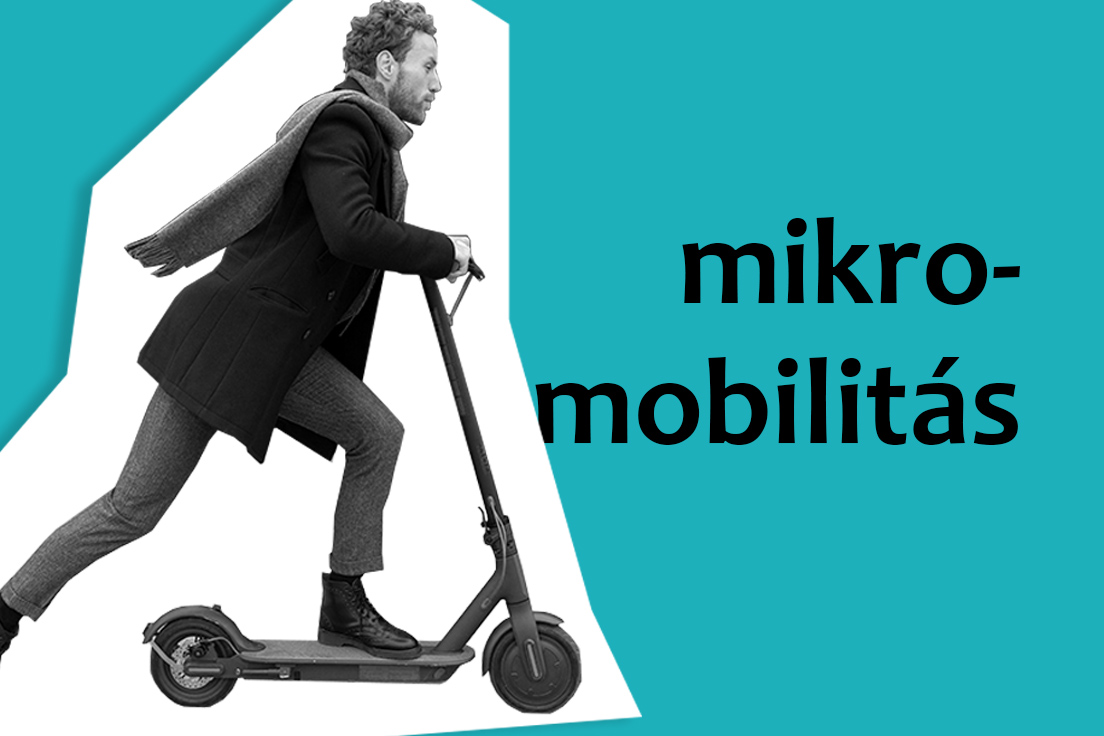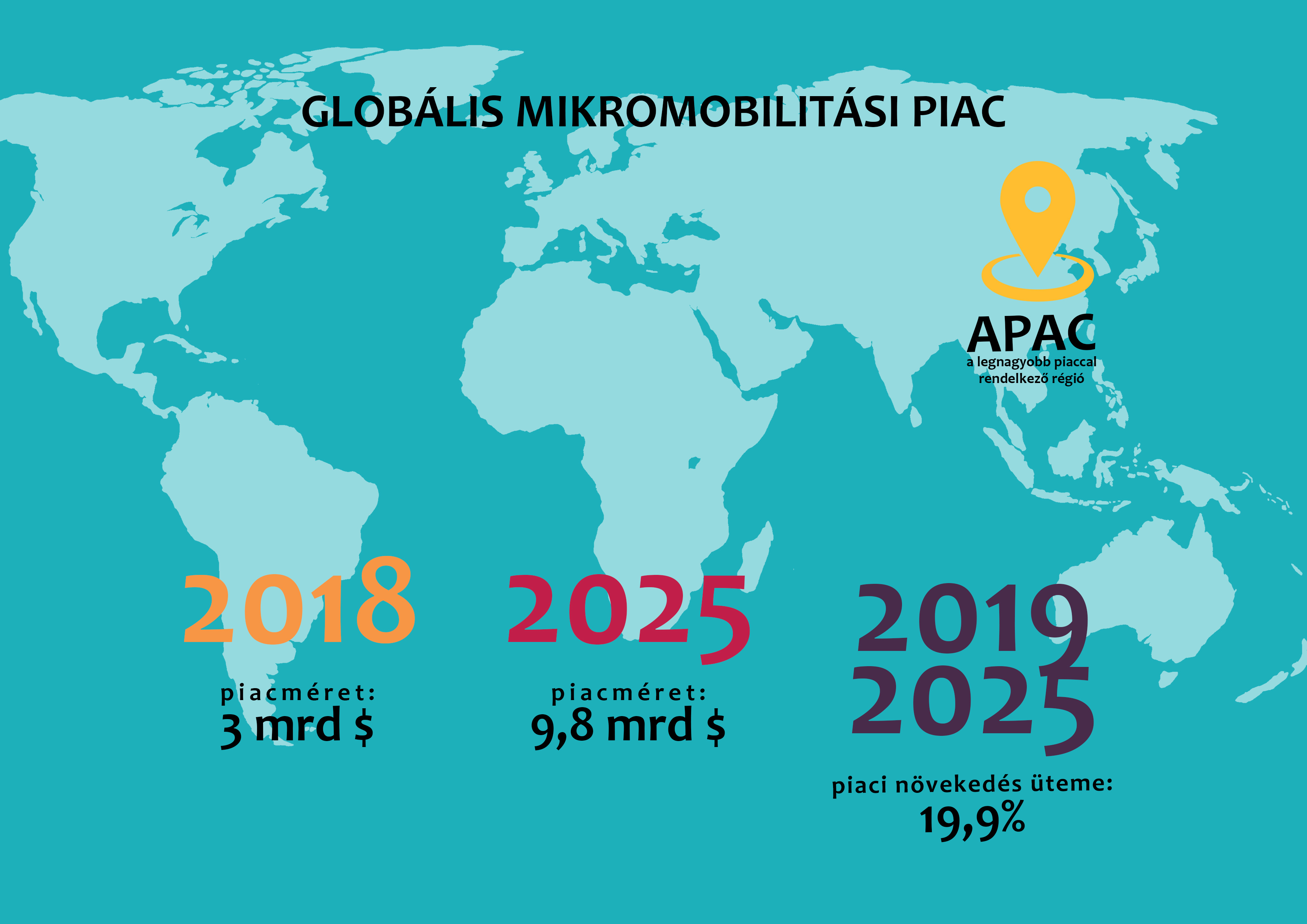Micromobility – How do we travel today and will in the future?

The market for transport devices and methods is constantly expanding as technology develops. This has led to the widespread adoption of a new trend in recent years: micromobility.
The new era of traffic and transport
As technology evolves, so do the modes of transport and delivery. It is not just how we get from one place to another that changes, but so does how goods reach us, or how manufacturers procure raw materials.
The 2000s saw the emergence of a number of new trends in transport. These include Uber taxi services, different car-sharing services, the use electric cars and vehicles, and the rise of micro-mobility. In addition, a number of companies are experimenting with self-driving cars. Among these trends, we will discuss micromobility in more detail.
What is micromobility...
Micromobility (link: https://www.eurofleet.hu/mi-fan-terem-a-mikromobilitas) refers to the use of small, lightweight means of transport that are human-powered, electric motor-driven or use a combination of these. It includes, for example, electric bicycles, scooters, e-scooters, e-scooters bikes, and segways.

Where, when and who uses it?
Micromobiles are mainly found in the big cities, and are currently the most suitable for this way of life, as they are typically used for “last metres” (link: https://www.dlr.de/content/de/artikel/news/2020/04/20201130_mikromobilitaet-hype-oder-schon-bald-alltag.html). This means that they are used to cover the connecting distance between metro, tram or other public transport, or the last metres from the stop to the destination. In addition, the demand for them also increases especially in summer, when people use them to cover routes that they would otherwise have walked. The average distance covered by these means of transport is 2 km. However, the coronavirus epidemic has increased this distance by 25-30%.
The younger generation is more willing to switch between different modes and means of transport, depending on which is more efficient and economical. Generation Z members, for example, prefer integrated, multimodal transport to private ownership of tools.
The positive and negative side of micromobility
Micromobility can bring many benefits for both users and cities: it
- offers an easy-to-use and sustainable transport option
- provides a solution for access to transport hubs
- is fashionable, so social groups who would otherwise drive can be reached, and most importantly
- is an energy-efficient and environmentally friendly form of transport (link: https://www.mobilservice.ch/admin/data/files/news_section_file/file/4850/agora-verkehrswende_e-tretroller_im_stadtverkehr_web.pdf?lm=1574342495). While a petrol car can travel only 2 km using one kilowatt-hour of energy, an electric car can travel 6 km, an electric scooter bike 35 km and an electric scooter 100 km.
However, it is also important to see that as micromobility spreads, pedestrian and cycling infrastructure will become increasingly congested and overcrowding may emerge in public spaces due to the parking of the vehicles.
Micromobility in Hungary
The Future Mobility Alliance conducted an online survey (link: https://www.jovomobilitasa.hu/kutatas-elektromos-jarmuvek) in Hungary in spring 2021. The questionnaire was completed by 704 people. 69.3% of respondents said they had driven an electric vehicle. When asked what kind of electric vehicle they had driven, the most common answer (95.9%) was car, followed by scooter (32%), e-bike (29.6%), segway (17.9%), scooter bike (14.8%) and motorbike (4.5%). These figures show that the use of electric cars is already widespread in Hungary, but few people have tried the micro-mobiles yet. 70.7% of respondents gave 5 out of 5 points to the question “What is the driving experience of electric vehicles?” The survey also reveals that the biggest advantages of electric vehicles according to respondents are that they do not increase air pollution locally, are more quiet and have low running costs. The biggest disadvantages were identified as high purchase price, insufficient number of public charging points and insufficient range.
In Budapest, the biggest winner of the epidemic-induced modal shift was the micromobility sector (link: https://docplayer.hu/196920433-Aktiv-es-mikromobilitas-budapest-helyzet-es-jovokep-vitaindito.html), within this especially bicycles. During the epidemic, all previous cycling records were broken. According to the Budapest Mobility Plan, the target for cycling and walking is to reach 5% and 15%, respectively, by 2030 in terms of travel length, but in combination rather than instead of public transport.
Forecasts for the future

Electric micro-mobiles have only been around for a few years, but the market is growing steadily and at an increasing pace. This is also shown by the take-off of DUCKT, an Estonian start-up (link: https://mmonline.hu/cikk/30-millio-e-kerekpar-lesz-europaban-2030-ban /). By the summer 2021, it will build 1,100 docking stations for more than 1,000 e-bikes in the Manhattan area, and will play a major role in setting sustainable transport standards in the US market. The company is also looking to expand into European countries. It is assisted by EIT InnoEnergy in it, a recent study of whom predicts that the micromobility market in Europe will grow to €380 million over the next six years. The organisation estimates that by 2030, there will be around 30 million private e-bikes and e-scooter bikes and 2.7 million shared transport vehicles in the continent.
In the United States, the number of micromobility trips (link: https://mabisz.hu/wp-content/uploads/2020/11/Mabisz_mikromobilitas_07_29_.pdf) doubled from 2017 to 2018, when community e-scootering was launched (85 million trips/year), with e-scooter traffic surpassing that of dock-based bike-sharing systems.
At the beginning of 2019, McKinsey & Company concluded in a publication that micromobility has huge market potential. According to the study, the market is growing two to three times faster than the market for car-sharing and e-mobile applications. This accelerating pace of development was hampered by the emergence of the pandemic, but paradoxically it has subsequently been boosted by the pandemic, as people who used to travel to work by public transport have now rented scooters or e-scooter bikes.
Every year in Germany, people take 30 million car journeys shorter than 2 km, and there are another 30 million car journeys shorter than 4 km. An analysis by the DLR transport research institute concludes that e-scooters could replace around 20% of all car journeys shorter than 4 km.
But micromobility can only be a good solution if urban development is adapted to it. According to a recent study (link: https://park-here.eu/grosse-zukunft-fuer-kleine-verkehrsmittel-mikromobilitaet-wird-immer-wichtiger/) of traffic planning in metropolitan areas in the USA, Canada, Japan and Europe, nowhere has the adequate infrastructure and transport regulation been put in place.
Sources
https://www.eurofleet.hu/mi-fan-terem-a-mikromobilitashttps://www.dlr.de/content/de/artikel/news/2020/04/20201130_mikromobilitaet-hype-oder-schon-bald-alltag.html https://mabisz.hu/wp-content/uploads/2020/11/Mabisz_mikromobilitas_07_29_.pdfhttps://www.mobilservice.ch/admin/data/files/news_section_file/file/4850/agora-verkehrswende_e-tretroller_im_stadtverkehr_web.pdf?lm=1574342495https://www.jovomobilitasa.hu/kutatas-elektromos-jarmuvekhttps://docplayer.hu/196920433-Aktiv-es-mikromobilitas-budapest-helyzet-es-jovokep-vitaindito.htmlhttps://www.mmonline.hu/cikk/30-millio-e-kerekpar-lesz-europaban-2030-ban/https://park-here.eu/grosse-zukunft-fuer-kleine-verkehrsmittel-mikromobilitaet-wird-immer-wichtiger/
